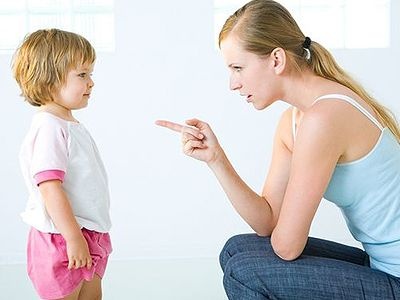
Adults might as well flip a coin if they are trying to determine whether a child is lying.
A new study found that adults correctly classified children's truths and lies 54 percent of the time, or only slightly better than chance. The findings are based on an analysis of 45 previously published experiments involving nearly 8,000 adults and about 1,800 children in all, the researchers said.

"[The result] is significantly above chance when you talk about it in statistical terms, but in practical terms, when you say 54 percent and chance is at 50 percent, it's maybe not as significant as we want it to be," said study lead researcher Jennifer Gongola, a doctoral student of psychology and social behavior at the University of California, Irvine.Scientific Tips for Raising Happy Kids]

Children as young as 3 years old can tell a lie, but there is little research on how good adults are at discerning those lies. To learn more, Gongola and her colleagues looked at earlier work, combining studies to produce a big sample for analysis.
The experiments that the researchers looked at were set up in different ways, but a classic setup involved a researcher asking whether a child had looked at a toy after he or she was asked not to do so. A video recording done when the adult was out of the room revealed whether the child was lying.
Overall, adults were better at identifying truths, correctly spotting true statements at an average rate of 64 percent of the time, the researchers found. In contrast, adults caught lies at an average rate of only about 48 percent, the researchers said.
"We're finding what's referred to as a truth bias," Gongola said. "People tend to assume that they're being told the truth even when you tell them that 50 percent of the children they view are telling a lie."
Lie detectors
The researchers also found that professionals such as social workers, police officers and teachers outperformed parents from the general public, but only slightly, with an average rate of 56 percent accuracy.
"We can say that, yeah, maybe on average, professionals are doing better than the layperson," Gongola said. "But this advantage is really slim."
The takeaway is that a professional's judgment on a child's falsehoods or truthfulness shouldn't be taken as the final say on a matter, she said.
Gongola noted that most of the experiments involved adults who did not know the children. The results might be different if more of the experiments involved parents or teachers who did know the youngsters, Gongola said.
However, adults aren't great detectives even when it comes to catching other adults' lies. Other meta-analyses have shown that adults can distinguish between lies and truths in other adults at an average rate of 55 percent, the researchers said.
[11 Facts Every Parent Should Know About Their Baby's Brain]

After Read This Subscribe me.. Thanks For Reading



